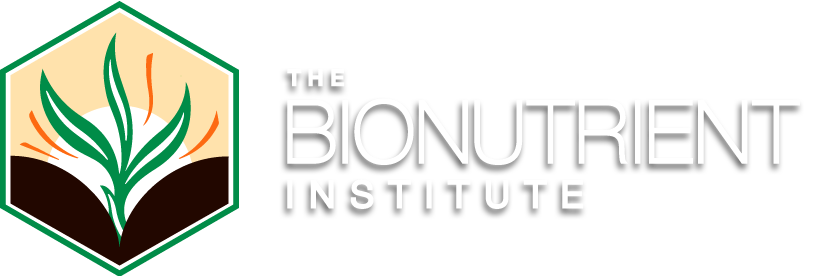
The Bionutrient Meter
We started this project because we understand a few basic points – that crop/food nutrition has declined over time, and that there has been a concurrent increase in physical, psychological, and emotional ailments related to nutrient deficiencies in our bodies.
We also understand that money is a powerful force in the world and that historically, the economic metrics around food were dominated by yield and cost, as opposed to nutritional quality.
How it works
Our device is actually, in many ways, shockingly simple.
The Bionutrient Meter is a handheld spectrometer that works through the principle of spectroscopy.
The Bionutrient Meter has lights (LEDs - light emitting diodes) that emit light at very specific wavelengths, which then bounce off objects like carrots, or carrot pulp, or spinach, or soil. Some of it is absorbed by the object and turned into other forms of energy, like heat. A light sensor in the device reads how much light bounces back for each wavelength very quickly and multiple times throughout a given measurement.
Light bouncing off matters because this is a characteristic of objects which directly correlates to the chemical compounds making up that object. So in the case of food and agriculture, there are known correlations between light reflectance at specific wavelengths and the amount of different nutrients found in food (vitamins, antioxidants, and aromatic compounds, to name a few), the levels of organic carbon in soil, and chlorophyll content in plants, etc. These light-bouncing characteristics and compounds “overlap” with each other - so we need to look at lots of data to try to parse out what is causing the response we’re seeing.
The concept, idea and creation was a collaboration between the Bionutrient Food Association and Our Sci, LLC. From concept to design to manufacturing our teams worked tirelessly to bring forward the technology to allow people to measure their food at home using a hand-held device. Since 2018, we’ve gathered thousands of soil, food and crop samples through our Grower Partner and Citizen Science programs to calibrate the latest version of the meter. By modelling the light bouncing off crop samples against lab derived values of antioxidants and polyphenols, the bionutrient meter can now be used to estimate nutrient density values.
The meter is only one part of the overall strategy that also includes an open-source data platform - owned by no corporate entity or individual, but instead, data that remains in the “commons” for access to all. Our small but mighty power team in Michigan takes all the necessary parts and manufactures, calibrates, packages and ships the meters. We are using a 3-D printer for the case, and have contracted a factory in China to build the boards. Click below for an inside look at the process.
How is the Bionutrient Meter an improvement over the Brix Meter?
A Refractometer, or Brix Meter, has been the best tool available for assessing the relative quality of fruits and vegetables for many generations. Refractometers measure the dissolved solids in liquids, including sugars, vitamins, minerals, proteins, hormones, etc., and offer a general measurement of how much nutrient activity is present in the plant leaf or harvested fruit.
In order to use a refractometer the crop must be squished or juiced to get a reading - which is problematic for two reasons:
some veggies are hard to get juice out of, physically speaking (think about using a garlic press to squeeze a single drop of liquid out of a winter squash!) and
ideally, we still want to be able eat our food after measuring the nutrients.
A spectrometer, by flashing a light at a crop and then reading the light that bounces back, can assess levels and ratios of a broad spectrum of elements and compounds in that crop.
Inherently then, it has the ability to assess much more than a refractometer, and give a much more sophisticated analysis of what it is assessing.
How does the Bionutrient Meter differ from the SCiO
Our nutrient testing tool operates along the same principle as the SCiO, except that the SCiO looks only at the NIR (near-infrared), and the Bionutrient Meter looks at UV/VIS/NIR (ultraviolet, visual, and near-infrared).
With every chemical element or compound vibrating at a different frequency, the Bionutrient Meter provides a view into a broader spectrum of information.
Also, SCiO is a closed-source, proprietary model, whereas the Bionutrient Meter is patently open.
This Bionutrient Meter works on leaves, roots, fruits, soil, liquids etc. Both leaves of a growing plant and from those found in the supermarket can be assessed.


